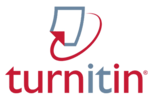A Flipbook on Waste Recycling Based on the Problem-Based Learning Model: An Effort to Improve Students’ Understanding of Explanatory Texts
Abstract
Purpose of the study: This study aims to: (1) describe the design of a flipbook media for teaching explanatory text comprehension; (2) present the results of the flipbook's feasibility testing; and (3) analyze its effectiveness in enhancing students’ understanding of explanatory texts.
Methodology: The research employed the Research and Development (R&D) method using the Borg & Gall model, encompassing the stages of analysis, design, development, implementation, and evaluation. The study was conducted at Elementary School Nongkosawit 01, Semarang City, involving both teacher and student participants.
Main Findings: The developed flipbook was designed to be visually appealing, pedagogically relevant, and responsive to the needs of teachers and students. Feasibility testing yielded very high validation scores 93.00% from media experts and 95.00% from material experts placing it in the “very feasible” category. Teacher and student responses indicated that the flipbook significantly supported engagement and comprehension. Effectiveness trials showed improvement rates of 84.16% in small-scale and 81.26% in large-scale trials, confirming its suitability for Grade V explanatory text learning.
Novelty/Originality of this study: The innovation of this study lies in the integration of Problem-Based Learning (PBL) with locally relevant recycled waste content into a digital flipbook format. This combination not only strengthens students’ mastery of explanatory texts but also embeds values of responsibility, environmental care, and sustainability. By contextualizing literacy learning with environmental education, the flipbook serves as both an academic and character-building tool. This model provides a replicable, culturally grounded, and eco-conscious approach to literacy instruction in primary schools.
References
I. Genitsarios, R. Jhagra, C. Warn, and J. A. Xavier, “From classroom to clinic: innovating radiotherapy treatment planning education through real-world end-to-end case study simulation with an anthropomorphic phantom,” BMC Medical Education, vol. 25, no. 1, pp. 465, 2025, doi: 10.1186/s12909-025-06695-w.
A. H. S. Dzaiy, and S. A. Abdullah, “The use of active learning strategies to foster effective teaching in higher education institutions,” Zanco Journal of Human Sciences, vol. 28, no. 4, pp. 328-351, 2024, doi: 10.21271/zjhs.28.4.18.
S. Dong, R. Zhi, and F. Gan, “Integrating robotics in art education: Leveraging constructivist and experiential learning frameworks to enhance cognitive development, problem‐solving skills and collaboration among diverse learners,” European Journal of Education, vol. 60, no. 2, pp. e70114, 2025, doi: 10.1111/ejed.70114.
D. Halder, E. M. Al Bastaki, S. Suleymanova, N. Muhammad, and A. Purushothaman, “Agile blended learning: A promising approach for higher education in the UAE,” SN Computer Science, vol. 5, no. 5, pp. 485, 2024, doi: 10.1007/s42979-024-02813-5.
K. A. Gamage, S. Y. Ekanayake, and C. C. Dehideniya, “Embedding sustainability in learning and teaching: Lessons learned and moving forward—Approaches in STEM higher education programmes,” Education Sciences, vol. 12, no. 3, pp. 225, 2022, doi: 10.3390/educsci12030225.
R. Afrilyasanti, Y. Basthomi, and E. L. Zen, “Fostering creativity and critical literacy: transforming EFL classes with engaging critical media literacy integration,” Asian Education and Development Studies, vol. 14, no. 2, pp. 133-151, 2025, doi: 10.1108/AEDS-06-2024-0124.
P. Uccelli, “The language demands of analytical reading and writing at school,” Written Communication, vol. 40, no. 2, pp. 518-554, 2023, doi: 10.1177/07410883221148727.
M. Custodio-Espinar, and A. López-Hernández, “Beyond written-linguistic modes of meanings: Multimodal representations to extend the range of literacy learning in EMI students,” Journal of Language Teaching and Research, vol. 14, no. 1, pp. 6-19, 2023, doi: 10.17507/jltr.1401.02.
Z. Zhang, and K. Hyland, “The role of digital literacy in student engagement with automated writing evaluation (AWE) feedback on second language writing,” Computer Assisted Language Learning, vol. 38, no. 5-6, pp. 1060-1085, 2025, doi: 10.1080/09588221.2023.2256815.
K. H. D. Tang, “Student-centered approach in teaching and learning: What does it really mean?,” Acta Pedagogia Asiana, vol. 2, no. 2, pp. 72-83, 2023, doi: 10.53623/apga.v2i2.218.
P. J. Woods, and Y. Copur-Gencturk, “Examining the role of student-centered versus teacher-centered pedagogical approaches to self-directed learning through teaching,” Teaching and Teacher Education, vol. 138, pp. 104415, 2024, doi: 10.1016/j.tate.2023.104415.
E. Balla, “Teacher centered method vs student centered method of teaching in teaching english: critical study,” Interdisciplinary Journal of Research and Development, vol. 10, no. 3, pp. 60-60, 2023, doi: 10.56345/ijrdv10n309.
E. K. Hokor, and J. Sedofia, “Developing probabilistic reasoning in preservice teachers: Comparing the learner-centered and teacher-centered approaches of teaching,” International Journal of Studies in Education and Science (IJSES), vol. 2, no. 2, pp. 120-145, 2021.
S. Z. Ahmed, S. Sultan, M. Kousar, H. A. Basit, R. Zaid, and S. Bano, “Effectiveness of teacher's centered approach on student’s learning at university level,” Journal of Positive School Psychology, vol. 6, no. 10, 2022.
J. Busa, and S. J. Chung, “The effects of teacher-centered and student-centered approaches in TOEIC reading instruction,” Education Sciences, vol. 14, no. 2, pp. 181, 2024, doi: 10.3390/educsci14020181.
R. M. Alqahtani, and M. Alhamami, “English as a foreign language teaching approaches in Saudi K–12 education: teacher-centered or student-centered,” Journal of Education and Learning (EduLearn), vol. 18, no. 3, pp. 817-824, 2024, doi: 10.11591/edulearn.v18i3.21303.
N. M. Nataño, “Perspectives on curriculum contextualization and localization as integral to promoting indigenous knowledge,” International Journal of Academic and Practical Research International Journal of Academic and Practical Research, vol. 2, no. 3, pp. 67-76, 2023, doi: 10.5281/zenodo.8031639.
I. Zahro, N. Kurniawan, and A. E. Cahyono, “Differentiated learning in the context of the independent curriculum: level of understanding, challenges, and school aspirations,” International Journal of Multiphysics, vol. 18, no. 4, 2024.
I. Karachalios, and N. Manesis, “Fostering environmental awareness in primary school students: evaluating the impact of a waste management education program,” European Journal of Education Studies, vol. 12, no. 4, 2025, doi: 10.46827/ejes.v12i4.5886.
J. K. Debrah, D. G. Vidal, and M. A. P. Dinis, “Raising awareness on solid waste management through formal education for sustainability: A developing countries evidence review,” Recycling, vol. 6, no. 1, pp. 6, 2021, doi: 10.3390/recycling6010006.
A. Uzorka, O. Akiyode, and S. M. Isa, “Strategies for engaging students in sustainability initiatives and fostering a sense of ownership and responsibility towards sustainable development,” Discover Sustainability, vol. 5, no. 1, pp. 320, 2024, doi: 10.1007/s43621-024-00505-x.
O. M. Owojori, R. Mulaudzi, and J. N. Edokpayi, “Student’s knowledge, attitude, and perception (KAP) to solid waste management: A survey towards a more circular economy from a rural-based tertiary institution in South Africa,” Sustainability, vol. 14, no. 3, pp. 1310, 2022, doi: 10.3390/su14031310.
R. Yusuf, and I. Fajri, “Differences in behavior, engagement and environmental knowledge on waste management for science and social students through the campus program,” Heliyon, vol. 8, no. 2, 2022, doi: 10.1016/j.heliyon.2022.e08912.
K. Nisa, S. Aflahah, A. S. Aldeia, L. Witteveen, and R. Lie, “Waste management literacy in Indonesian secondary schools: Assessing knowledge, attitudes, and behavior,” Jurnal Cakrawala Pendidikan, vol. 44, no. 2, 2025, doi: 10.21831/cp.v44i2.78725.
M. H. D. Hasibuan, “Pengembangan bahan ajar teks eksplanasi berbasis ekologi berbentuk flip book untuk siswa kelas xi SMA Negeri 1 Padangsidempuan [Development of teaching materials for ecology-based explanatory texts in the form of flip books for class XI students of SMA Negeri 1 Padangsidempuan],” Tesis. Pendidik. Bhs. dan Sastra Indones. (Doctoral Diss. UNIMED), 2021.
N. M. R. Zahroh, “Pengembangan flip book pengayaan teks eksplanasi berbasis kearifan lokal kebudayaan indonesia untuk siswa kelas VIII SMP Sunan Apel Poncokusumo, Kabupaten Malang [Development of a flip book for enriching explanatory texts based on local wisdom of Indonesian culture for grade VIII students of Sunan Apel Middle School, Poncokusumo, Malang Regency].,” 2022.
D. Fitriani, R. Rukayah, and J. Daryanto, “Analisis kemampuan memahami teks eksplanasi pada peserta didik kelas V sd [Analysis of the ability to understand explanatory texts in grade V elementary school students],” Didaktika Dwija Indria, vol. 9, no. 3, pp. 98-102, 2021, doi: 10.20961/ddi.v9i3.50117.
E. Winaryati, E-Book Cercular Model RD&D (RD&D Pendidikan dan Sosial), 2021.
S. Sugiyono, Metode Penelitian Kuantitatif,Kualitatif dan R&D [Quantitative, Qualitative and R&D Research Methods], Bandung Alf., 2021.
Girsang, S. E. E., Tumanggor, E. A. P., Metboki, Y., Herryani, H., Herman, H., Syathroh, I. L., ... & Saputra, N. (2025). “Empowering students’ ability in writing descriptive texts through point illustration explanation (PIE) strategy: A case on teaching strategy.” Studies in Media and Communication, 13(1), 366-377, 2025, doi: 10.11114/smc.v13i1.7466.
A. Libiawati, D., Indihadi, D., & Nugraha, “Analisis kebutuhan penyusunan buku ajar mata pelajaran bahasa indonesia berbasis menulis teks eksplanasi [Analysis of the need to compile Indonesian language subject textbooks based on writing explanatory texts],” PEDADIDAKTIKA,” J. Ilm. Pendidik. Guru Sekol. Dasar, vol. 7, no. 2, pp. 77–82, 2020, doi: 10.17509/pedadidaktika.v7i2.25231.
Q. Magdalena, I., Fatharani, J., Oktavia, S. A., & Amini, “Peran guru dalam mengembangkan bakat siswa [The role of teachers in developing students’ talents],” Pandawa, vol. 2, no. 1, pp. 61–69, 2020, doi: 10.36088/pandawa.v2i1.541.
I. Sina, Metodologi Penelitian [Research methodology], Penerbit Widina Bhakti Persada Bandung, 2022,
A. S. Rafidah K.K and H. N. Maharani, “Inovasi dan pengembangan produk keuangan syariah: tantangan dan prospek di era revolusi industri 4.0 [Innovation and development of Islamic financial products: challenges and prospects in the era of the industrial revolution 4.0],” JIE, vol. 8, no. 1, Dec. 2023, doi: 10.29040/jie.v8i1.11649.
S. F. A. Widodo, “Model for characters strengthening based on 5S to support halal industry,” AIP Conference Proceedings, vol. 2671. 2023. doi: 10.1063/5.0116863.
V. F. Agrifina, J. S. Hermawan, R. Rapani, and N. Astuti, “Pengaruh penggunaan media flipbook terhadap pemahaman konsep pada pembelajaran mandiri siswa sekolah dasar [The influence of using flipbook media on conceptual understanding in independent learning of elementary school students],” J. Pendidik. Dasar, vol. 14, no. 1, pp. 87–98, 2022, doi: 10.23969/jp.v10i01.23695.
D. Iskandar, “Pengembangan bahan ajar elektronik modul bahasa indonesia materi teks eksposisi pada siswa kelas X SMAN 1 Palabuhan Ratu dan SMA Pasundan 1 Cimahi [Development of electronic teaching materials for Indonesian language modules on expository text material for class X students of SMAN 1 Palabuhan Ratu and SMA Pasundan 1 Cimahi],” Argopuro: Jurnal Multidisiplin Ilmu Bahasa, vol. 2, no. 1, pp. 50–60, 2024, doi: 10.6734/argopuro.v2i1.2553.
L. B. Mirnawati, and R. A. V. Fabriya, “Penerapan media flipbook untuk meningkatkan literasi membaca siswa SD [Implementation of flipbook media to improve reading literacy of elementary school students],” Jurnal Pemikiran Dan Pengembangan Sekolah Dasar (JP2SD), vol. 10, no. 1, pp. 22-38, 2022, doi: 10.22219/jp2sd.v10i1.19837.
M. Beege, F. Krieglstein, and C. Arnold, “How instructors influence learning with instructional videos-The importance of professional appearance and communication,” Computers & Education, vol. 185, pp. 104531, 2022, doi: 10.1016/j.compedu.2022.104531.
M. A. S. M. Fatchurahman, H. Adella, and M. A. Setiawan, “Development of animation learning media based on local wisdom to improve student learning outcomes in elementary schools,” International Journal of Instruction, vol. 15, no. 1, pp. 55-72, 2022, doi: 10.29333/iji.2022.1514a.
R. Okra, “The development of educational game-based learning media in natural science subject for elementary school students,” Jurnal Inovasi Teknologi Pendidikan, vol. 10, no. 2, pp. 122-132, 2023, doi: 10.21831/jitp.v10i2.54890.
Y. L. Chen, C. C. Hsu, C. Y. Lin, and H. H. Hsu, “Robot-assisted language learning: Integrating artificial intelligence and virtual reality into English tour guide practice,” Education Sciences, vol. 12, no. 7, pp. 437, 2022, doi: 10.3390/educsci12070437.
Copyright (c) 2025 Lintang Luthfiana, Panca Dewi Purwati

This work is licensed under a Creative Commons Attribution 4.0 International License.
Authors who publish with this journal agree to the following terms:
- Authors retain copyright and acknowledge that the Integrated Science Education Journal is the first publisher licensed under a Creative Commons Attribution 4.0 International License.
- Authors are able to enter into separate, additional contractual arrangements for the non-exclusive distribution of the journal's published version of the work (e.g., post it to an institutional repository or publish it in a book), with an acknowledgment of its initial publication in this journal.
- Authors are permitted and encouraged to post their work online (e.g., in institutional repositories or on their website) prior to and during the submission process, as it can lead to productive exchanges and earlier and greater citation of published work.








.png)
.png)





